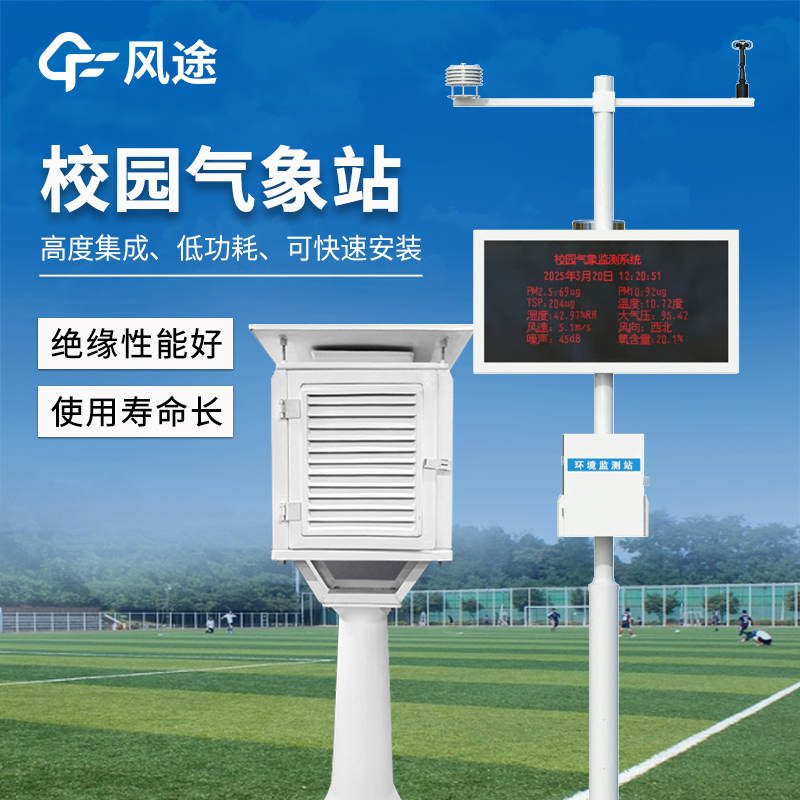Meteorological environment monitoring equipment supplier
Insist on doing high-precision customer favorite technology products
Schools install weather stations mostly for educational considerations. Firstly, it provides a vivid practical learning platform. Students are no longer confined to textbook knowledge. Instead, by observing weather phenomena such as temperature, humidity, and wind speed in person, they can understand meteorological principles more intuitively, thus increasing their learning interest and improving learning outcomes. Secondly, participating in meteorological observation activities helps students exercise practical skills such as observation ability, hands-on ability, and data analysis ability, and cultivate their scientific literacy and innovative thinking. Thirdly, weather stations can enhance students' awareness of disaster prevention and mitigation. Through the monitoring and analysis of meteorological data, students can understand the formation and hazards of various meteorological disasters, master corresponding prevention and response measures, and improve their self-protection ability. Finally, based on the weather station, schools can carry out rich popular science activities, such as meteorological knowledge competitions and science lectures, further expanding students' knowledge and creating a good campus popular science atmosphere.
The Structure of Campus Weather Station
I. Sensors
This is the core component of the weather station, used to monitor various meteorological elements. For example, the temperature sensor is used to measure the air temperature, the humidity sensor is used to detect the air humidity, the wind speed sensor and the wind direction sensor are respectively used to measure the speed and direction of the wind. In addition, there is a rainfall sensor for recording the amount of rainfall, and an air pressure sensor for measuring the atmospheric pressure, etc.
II. Data Collector
Its main function is to collect various data monitored by the sensors, and conduct preliminary processing and arrangement, converting the data into a format that is convenient for transmission and analysis.
III. Data Transmission Module
It is responsible for transmitting the data processed by the data collector to the terminal device or monitoring platform. Common transmission methods include wired transmission, such as connection via network cables, and wireless transmission, such as using networks like GPRS and 4G for data uploading.
IV. Power Supply System
It provides stable power support for all devices of the weather station. Common power supply methods include mains power supply and solar power supply. Mains power supply has high stability but is limited by the site; solar power supply has advantages such as strong mobility and a wide range of adaptability, and is widely applied in some outdoor sites or places lacking mains power supply.
V. Protective Devices
For example, the Stevenson screen is mainly used to protect instruments such as the temperature sensor and humidity sensor from interference by external environmental factors, such as direct sunlight and precipitation, ensuring that the sensors can accurately measure meteorological data. There are also brackets for fixing and supporting various devices.
VI. Monitoring Platform or Display Terminal
It is used to receive, display and analyze the data transmitted by the weather station. On the monitoring platform, teachers and students can intuitively view real-time meteorological information, such as temperature curves and changes in wind speed and direction, and can also query and analyze historical data. Some schools also equip electronic display screens, which are installed on campus to enable teachers and students to learn about the current weather conditions at any time.
